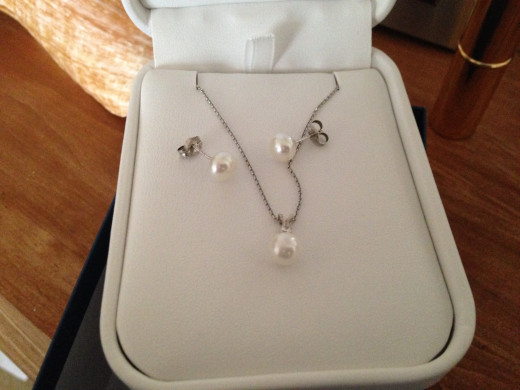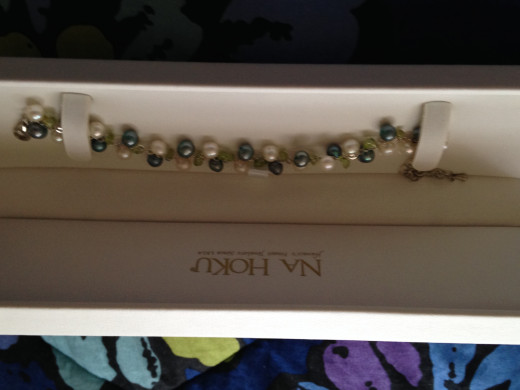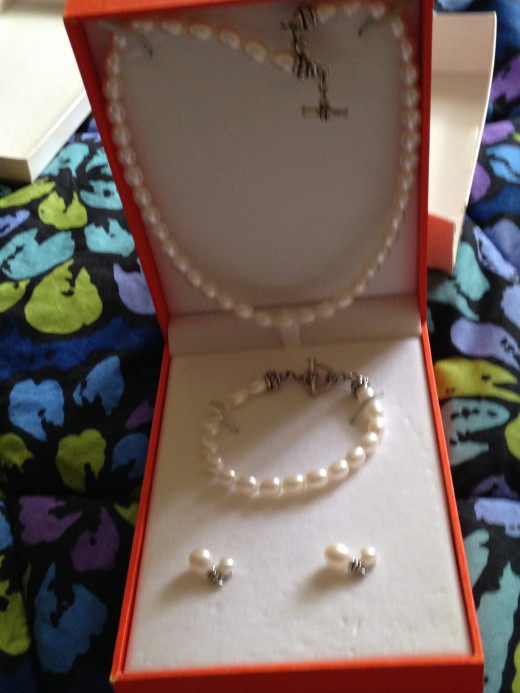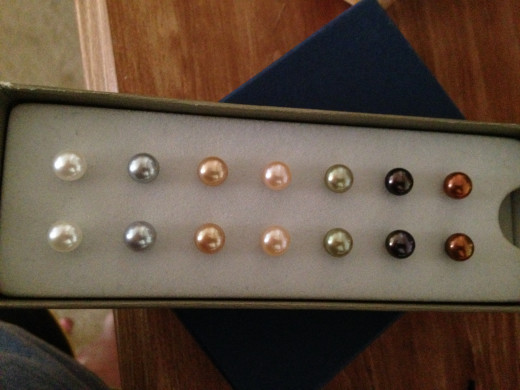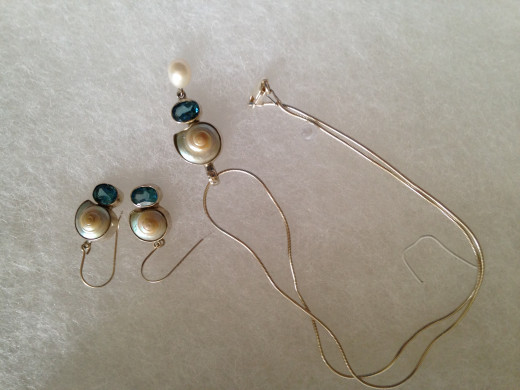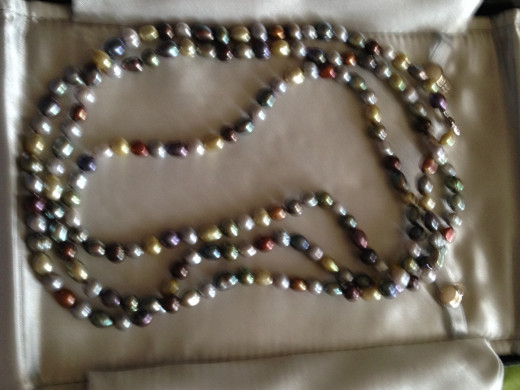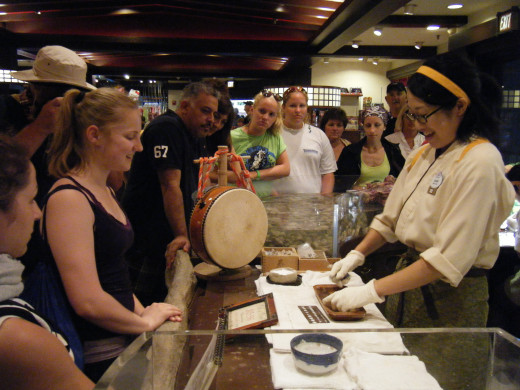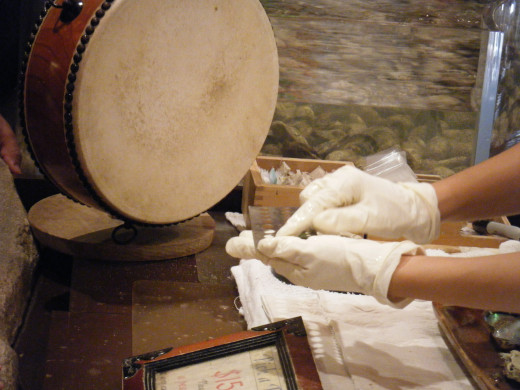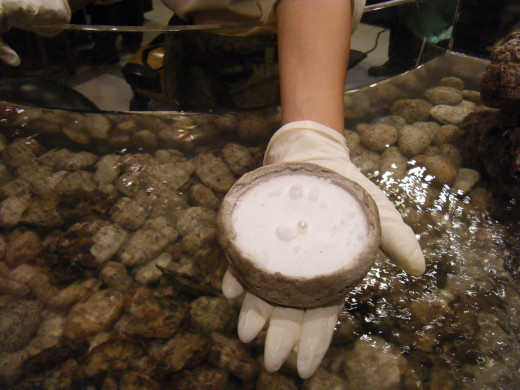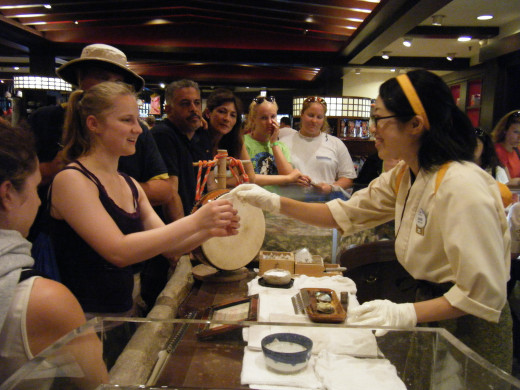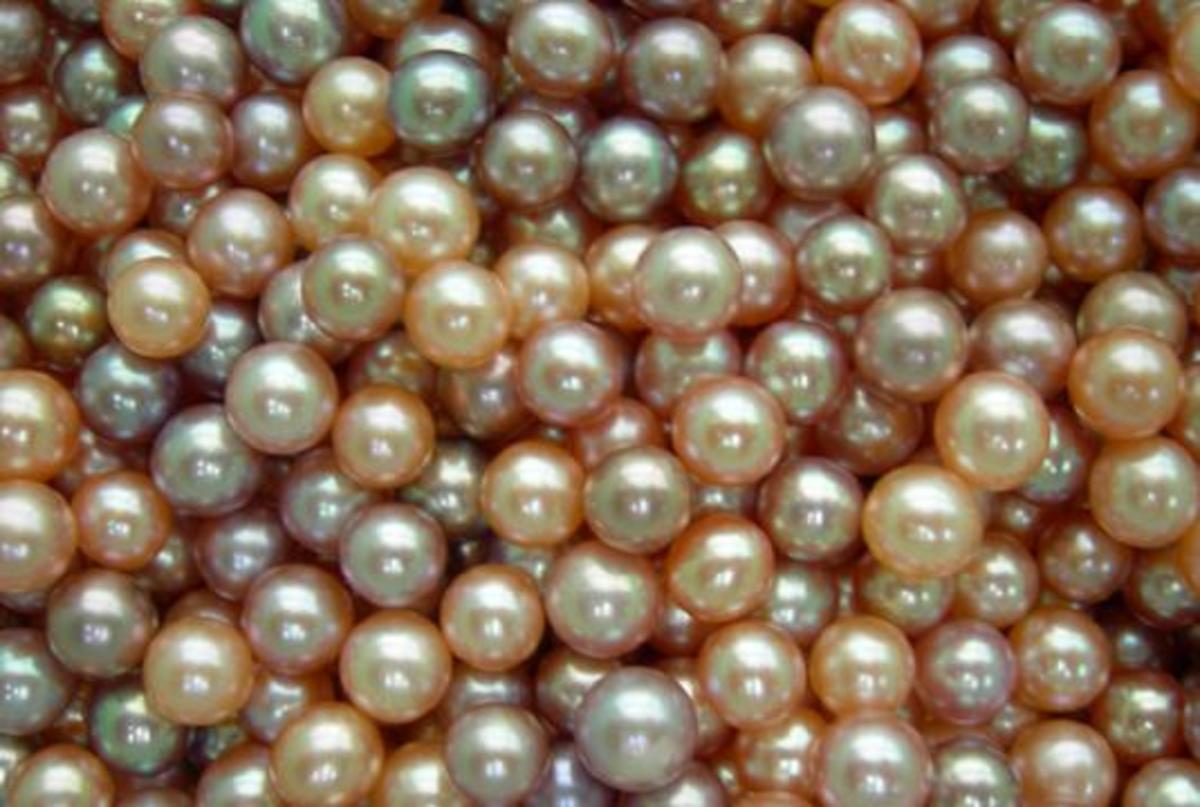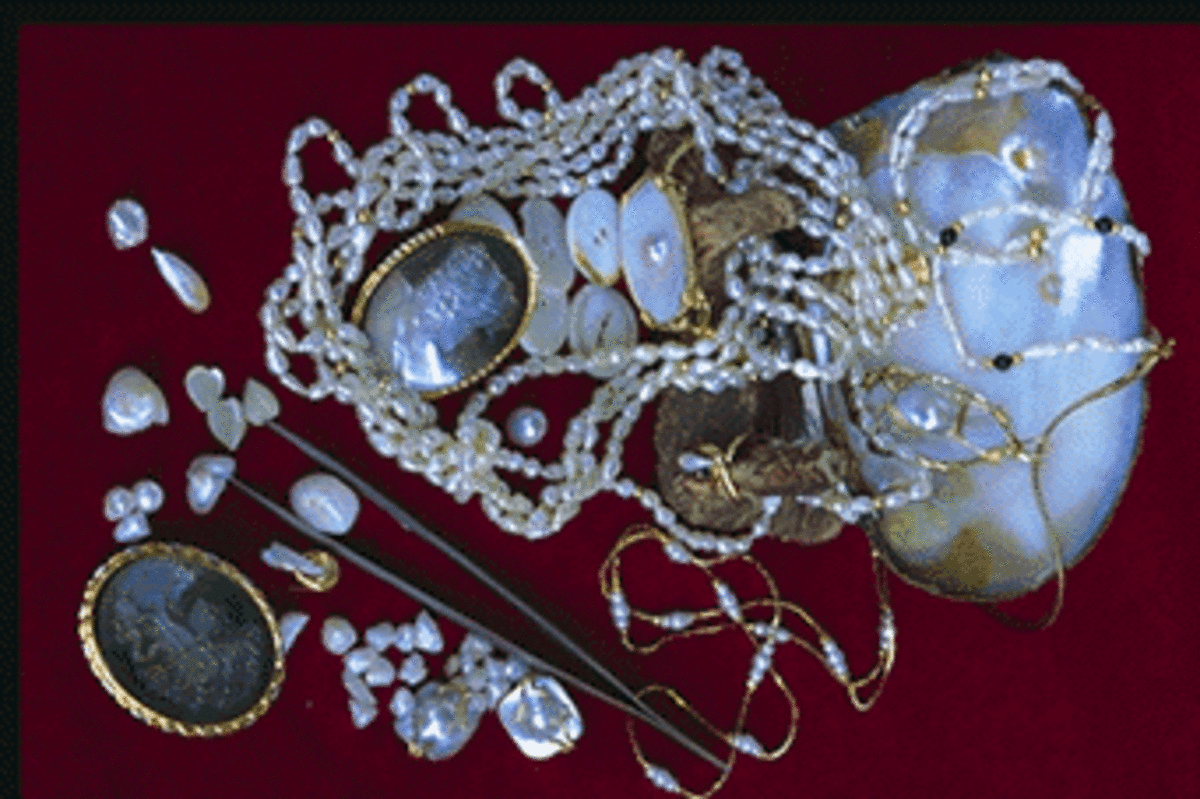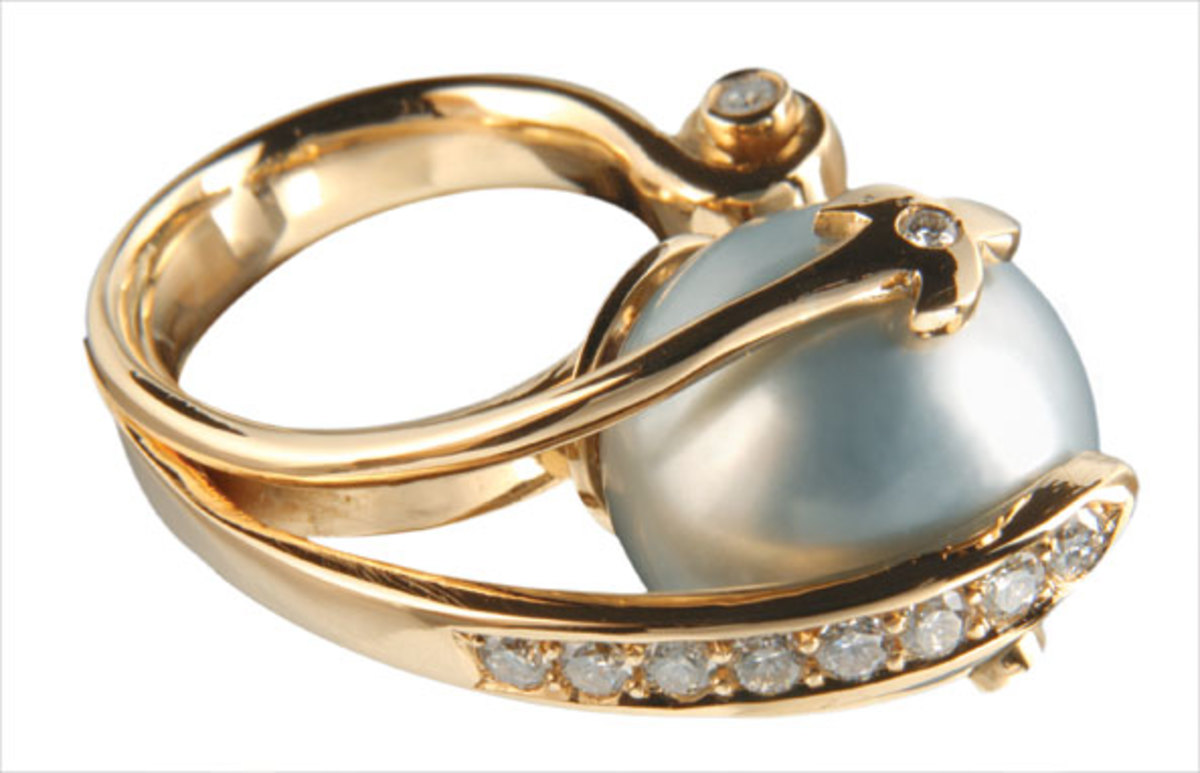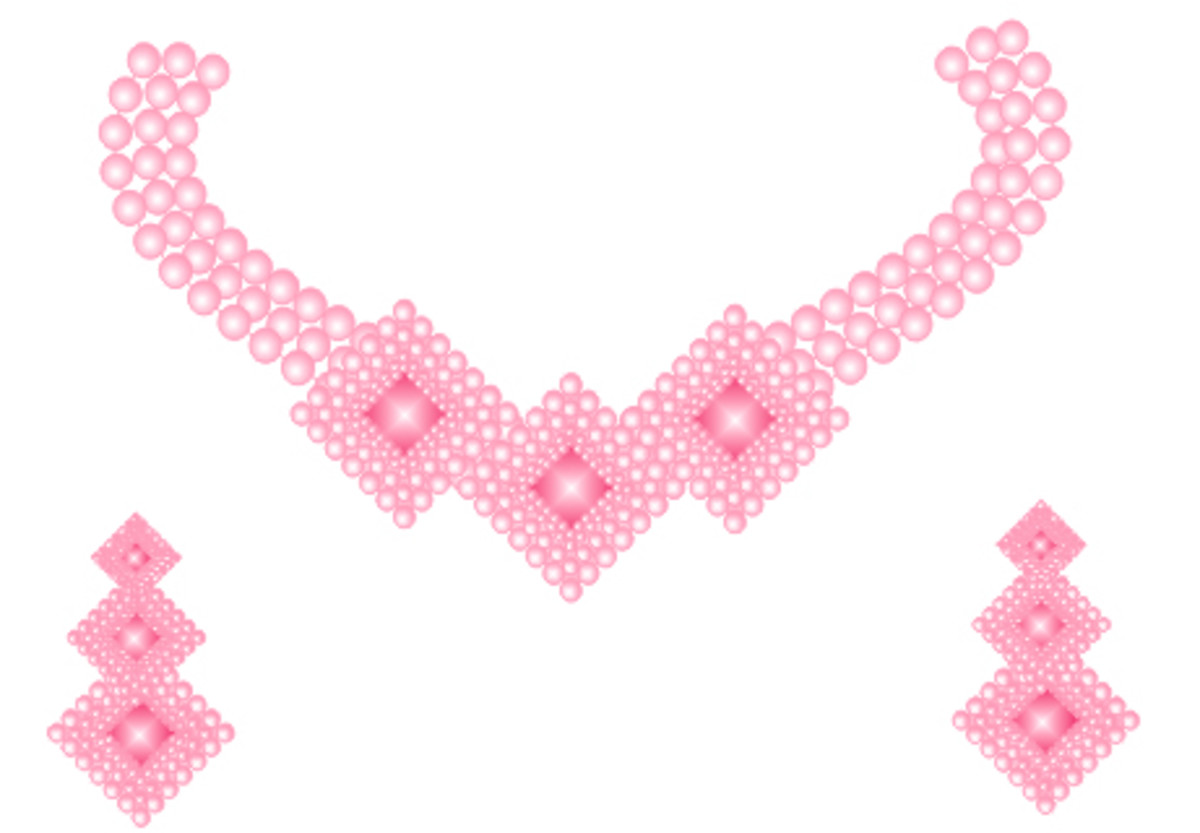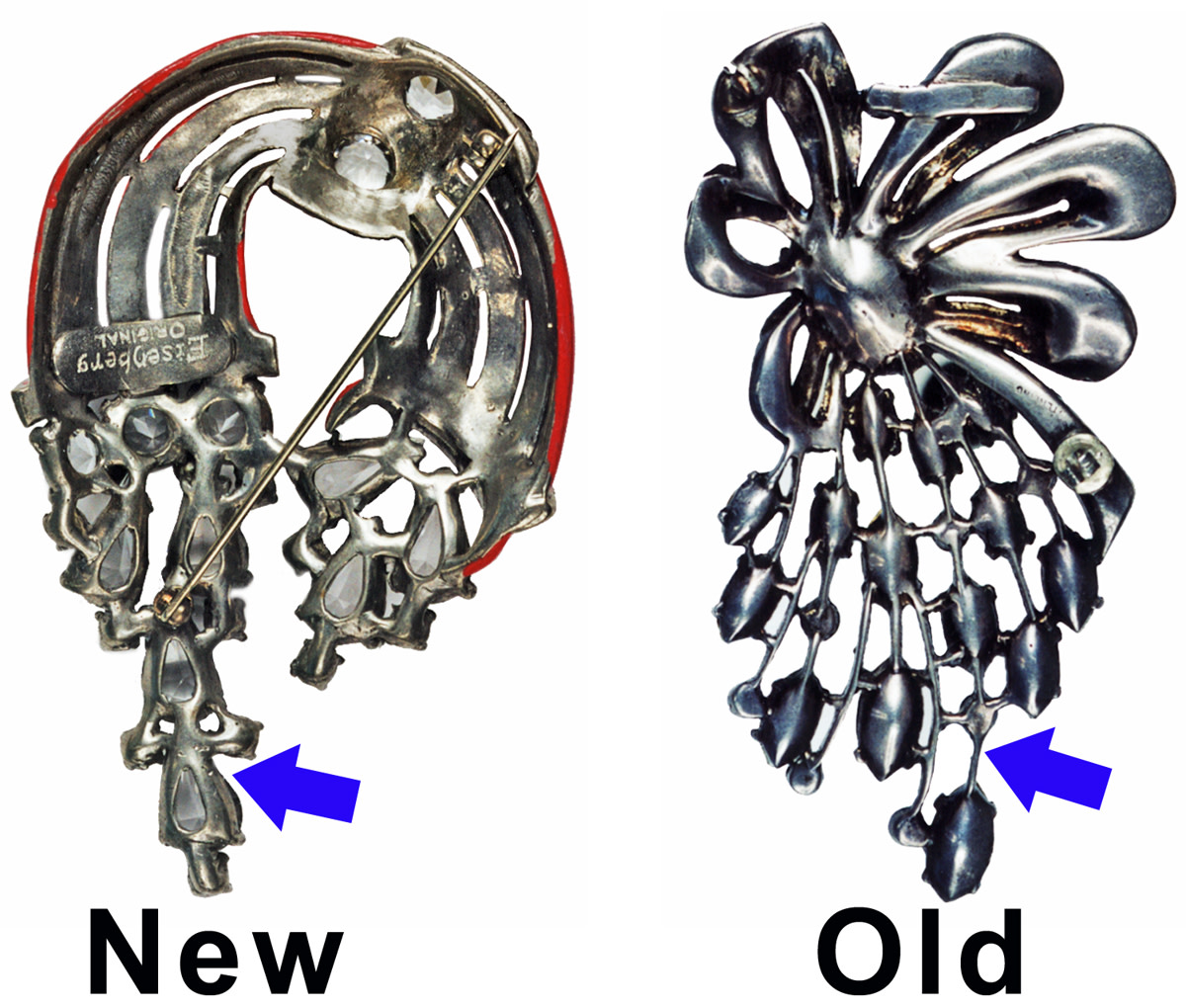Pearls: Jewels of the Sea
Farming Pearls
Today most pearls are cultured. This means that they are deliberately grown by people on pearl farms. These farms can either consist of freshwater or saltwater. Freshwater mussels are capable of growing more than one pearl at a time, thus making them quite popular with pearl farmers. However, the Tahitian pearl, the black pearls, can only be grown by the black pearl oyster. The black pearl oyster is only able to grow one pearl at a time. This is one of the reasons black pearls are among the most popular and most expensive pearls.
However, it doesn't matter if the mollusk has been farmed to produce pearls or produces them naturally the mollusk does not get the opportunity to produce pearls for more than one collecting season. This is because to harvest the pearl the mollusk must be opened, this kills the creature.
How Are Pearls Made?
It is a common misconception that pearls only form in oysters. Essentially all a pearl is, is a hard object that is produced by a shelled mollusk. Shelled mollusks include: oysters, clams, and mussels. They can be found in fresh or salt water.
A pearl is formed when something, usually a small irritant like a grain of sand or a parasite, gets stuck inside the shelled mollusk. The mollusk then secretes a chemical compound that contains calcium carbonate, these combination of chemicals makes what is called nacre. Nacre is what makes up mother-of-pearl, this is the shinny inside part of the shell on clams, mussels, and oysters.
After many layers of this secretion covering the irritant a pearl is formed. The more layers, the larger the pearl.
Saltwater Pearls
Click thumbnail to view full-size


Pearls in History
As pearl farming is relatively new the only way pearls could be obtained was to happen upon them when harvesting bivalved. This meant that only the very upperclass had the opportunity to purchase pearls.
Most likely as a result of pearls being so rare and seen as an item of luxury there are many religious texts that speak of pearls in Heaven. In Hindu pearls were often associated with the gods.
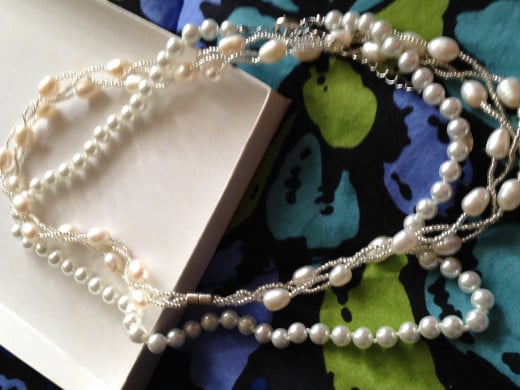
Imitation Pearls
Imitation pearls are significantly cheaper than real pearls, and are more readily available. However, they do not have the same weight that a real pearl has and their luster (shine) is not nearly hast bright as real pearls.
Some imitation pearls are made of mother-of-pearl or coral. However, cheaper imitation pearls are made of covered glass or plastic.
Freshwater Pearls
Click thumbnail to view full-size


Selecting Your Own Pearl Oyster
There are facilities, typically associated with tourists, where you can select your own oyster to open for a pearl. The guarantee is that every oyster has at least one pearl. The part that makes it fun is your oyster could have more than one pearl, a black pearl, or a very large pearl inside. Typically selecting the oyster is fairly cheap, around $20, and that is not a bad price for a pearl. However, if you decided to set the pearl that day that is where the price can get a little high. But, chances are you are going to get the pearl set anyway at a jeweler's when you get home anyway. After all what are you going to do with a single, unset pearl?




The Colors of Pearls
Pearls come in many different colors, and some are more valuable than others. Black and white pearls are the most commonly used for fine pearl jewelry. Colors include:
- Black
- White
- Pink
- Blue
- Champagne
- Green
- Purple
Pearls in Jewelry
Larger pearls are the most valuable. Large, round pearls are the most valuable of all. Pearls can come in eight different shapes: round, semi-round, button, drop, pear, oval, baroque, and circled. Drop and pear pearls are most often used in earrings and single pearl pendants. Round and semi-round pearls are often used to make strands of pearls for necklaces and bracelets. Button pearls make great stud earrings since the back is slightly flattened. Baroque pearls are often odd shapes and are often seen in cheaper pearl jewelry.
Fun Facts
Pearl jewelry is special in that it has its own terminology. The length of the strand of pearls determines the name. The 'collar' is a strand of pearls that sits against the throat without hanging down. Whereas, 'chokers' sit at the base of the neck. The 'princess length' is a strand of pearls that hangs down to the collar bone. A pearl strand at 'matinee length' will sit just above the breasts. The 'opera' strands will reach the breastbone. The longest of all stands of pearls is the 'pearl rope' and is anything longer than 45 inches. That is a lot of pearls.
All of the above strands can be made of a single stand of pearls or multiple strands. These strands can be further categorized as uniform or graduated. Uniform pearls are all of similar size, being no more or less than .5mm of each other. Graduated strands have a difference of around 3mm from the middle of the strand to the ends.
© 2014 Alexandria

